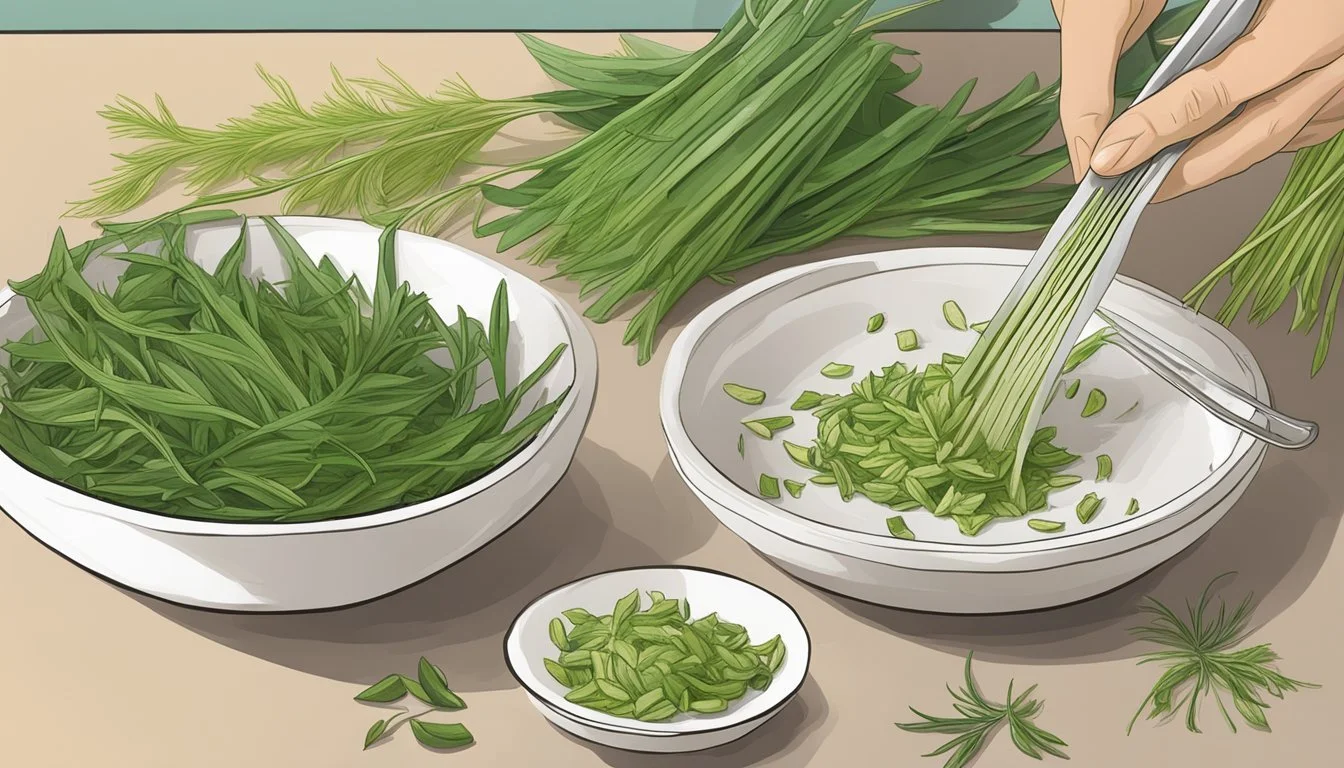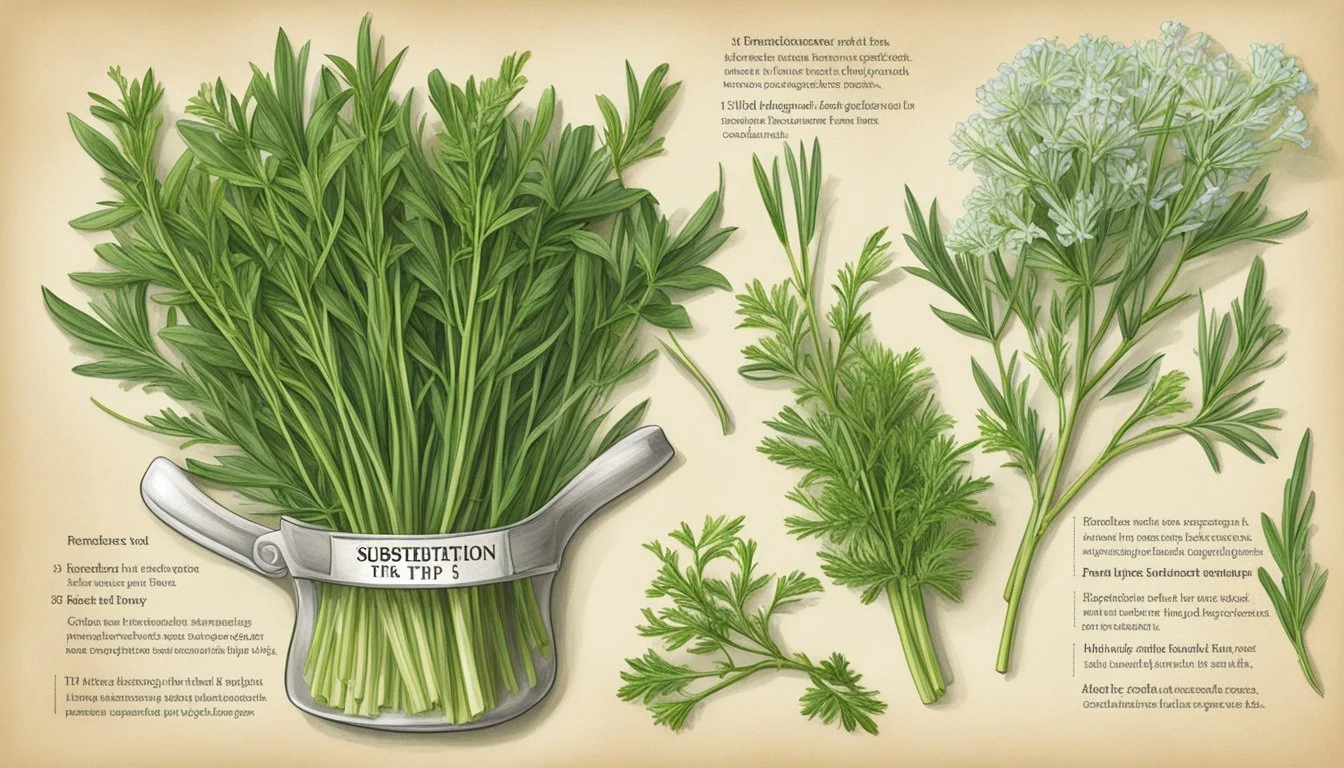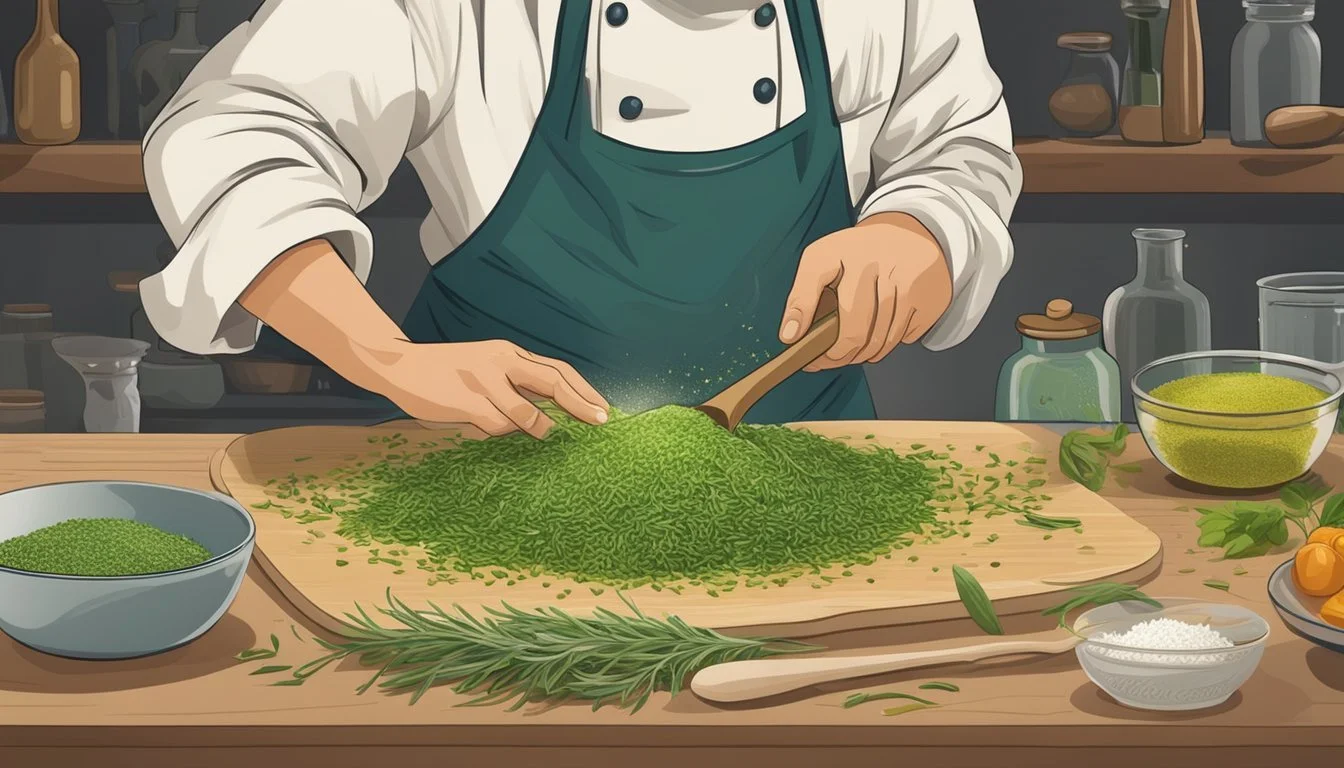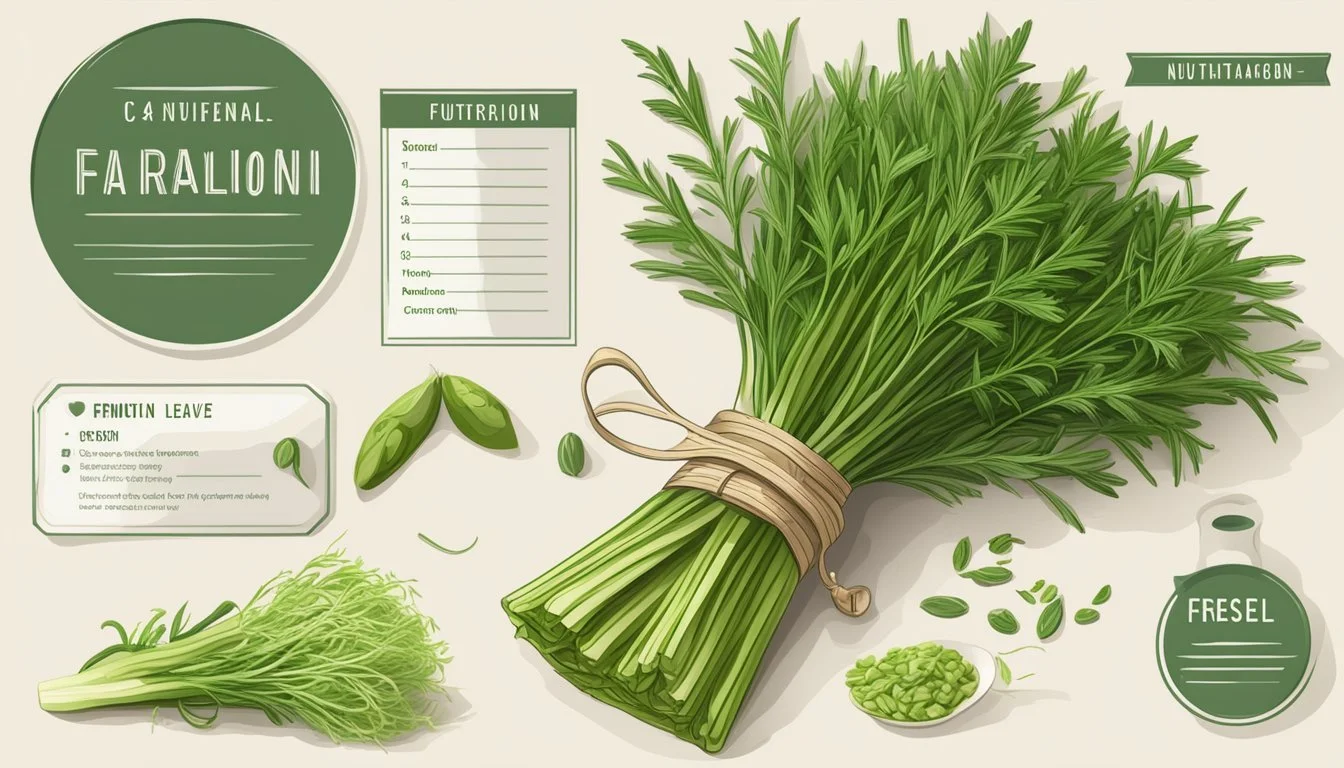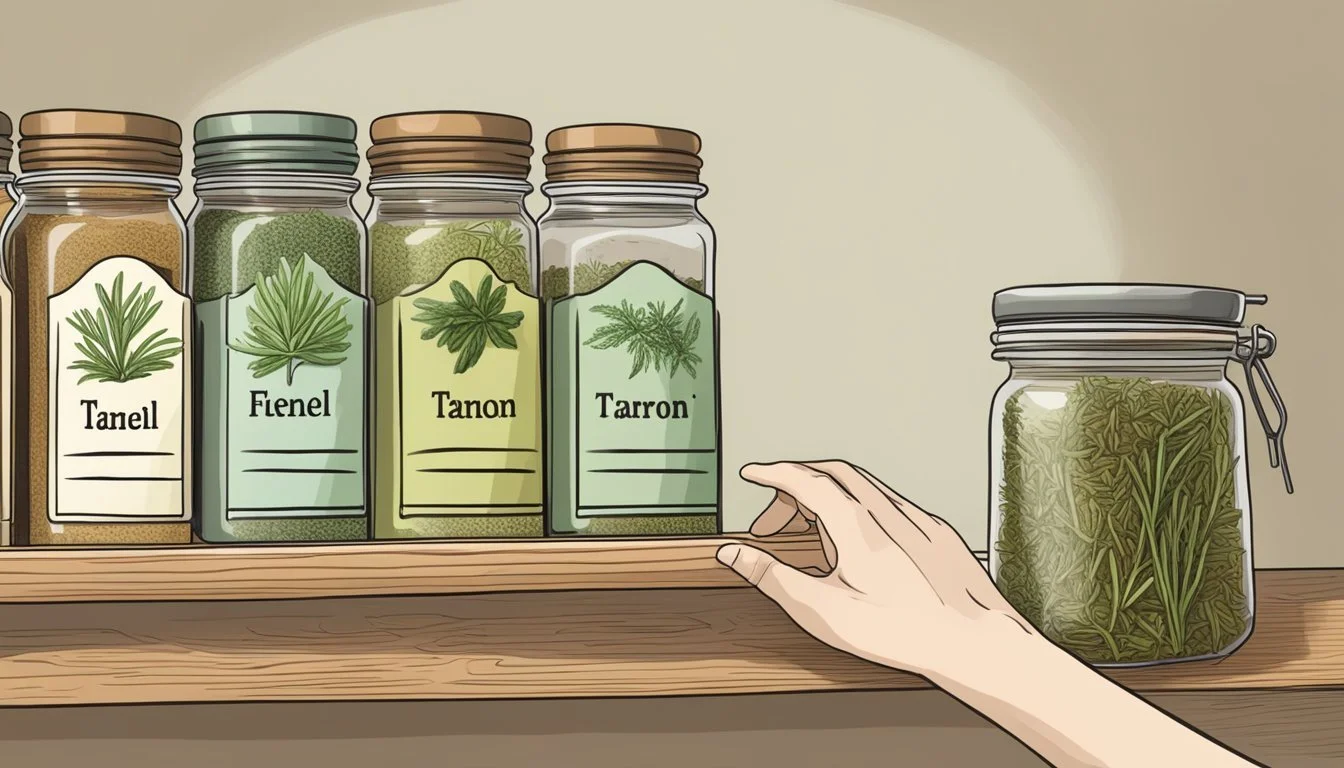How to Substitute Tarragon for Fennel
A Simple Flavor Swap Guide
Tarragon and fennel (how long does fennel last?), both known for their aromatic qualities, often find their way into an array of culinary dishes. Tarragon, with its slight anise-like flavor, is a staple in French cuisine and is particularly favored in sauces, chicken dishes, and vinaigrettes. On the other hand, fennel, a vegetable with a bulb, stalks, and fronds, imparts a warm, aniseed flavor that is prominent in Italian and Mediterranean cooking.
When fennel is not available or when a recipe calls specifically for its licorice essence, tarragon emerges as a suitable substitute. It is important to note that while both share an aniseed flavor profile, tarragon tends to be more potent in taste. Therefore, it should be used sparingly to avoid overpowering a dish.
Substituting tarragon for fennel requires consideration of the form in which fennel is used in a recipe – whether that's the bulb, fronds, or seeds. Fresh tarragon typically stands in for fennel fronds to garnish or add a finishing touch to dishes. However, when replacing fennel seeds, which are stronger in flavor, a discerning cook would use even lesser amounts of tarragon to achieve the desired balance without compromising the integrity of the dish. This nuanced understanding of the herbs ensures a successful culinary adaptation.
Understanding Herbs
In the culinary world, herbs are key ingredients that enhance the flavor profiles of various dishes. Their versatility allows for a range of substitutions to maintain the essence of the original recipe.
Herb Profiles
Herbs can be categorized as either perennial, like rosemary and tarragon, or annual, such as basil. Anise and fennel seeds, despite being seeds, share a licorice taste with certain perennial herbs and can often be used interchangeably in recipes.
Tarragon: A perennial herb known for its slender leaves and distinctive licorice flavor.
Fennel Seeds: Aromatic seeds that offer a similar anise-like flavor to tarragon.
Rosemary: Another perennial herb with a robust, piney aroma commonly used in cooking.
Understanding the nuances of each herb, including whether it's fresh or dried, influences how they are used in dishes. Dried herbs, for example, are more potent than their fresh counterparts, necessitating adjustments in quantity.
Flavor Palette
Herbs possess unique flavor profiles that can often complement or mimic each other:
Licorice Flavor: Herbs like tarragon and anise have this profile, characterized by sweet, yet slightly spicy notes.
Substitutions: Caraway or chervil can substitute for tarragon for their resemblance in taste; however, the intensity differs, so proportions should be adapted.
Oregano and Basil: While not similar to tarragon, they exemplify the herbal variety in flavor, ranging from bold to sweet.
A table can be helpful to summarize substitution guidance for tarragon:
Herb to Substitute Flavor Note Fresh vs. Dried Ratio Comparable to Tarragon Anise Licorice N/A as a seed Close match Fennel Seeds Licorice N/A as a seed Similar Caraway Earthier 2:1 (fresh to dried) Partial match Chervil Mild 3:1 (fresh to dried) Close match Rosemary Piney 3:1 (fresh to dried) Divergent flavor
By knowing the individual characteristics of these herbs, chefs and home cooks alike can deftly navigate flavor palettes and create satisfying dishes despite the absence of the original ingredient.
Tarragon and Its Culinary Uses
Tarragon is an aromatic herb distinguished by its narrow leaves and lively, licorice-like flavor. It's a staple in many kitchens, closely associated with French cuisine, and offers both culinary versatility and potential health benefits.
Tarragon in Cooking
Tarragon plays a key role in culinary applications due to its distinct taste that adds complexity to dishes. In its fresh form, it imparts a more vibrant flavor, while dried tarragon is more subtle and suitable for longer cooking processes.
Fresh tarragon is ideal for:
Salads
As a garnish
Infused vinegars
Dried tarragon works well in:
Slow-cooked stews
Hearty soups
Using tarragon begins with understanding its potency; a small amount can go a long way in delivering its signature essence.
Tarragon in French Cuisine
In French cuisine, tarragon is an essential ingredient, earning the moniker "the King of Herbs." It is prevalent in elegant sauces and classic herb blends, contributing freshness and an anise undertone to intricate flavor profiles.
Key French culinary applications include:
Béarnaise sauce: A tarragon-infused emulsion of butter and egg yolks.
Herbes de Provence: A dried herb mix where tarragon is often a component.
These uses exemplify tarragon's ability to elevate traditional French dishes with its unique flavor.
Health Benefits of Tarragon
Tarragon is not just celebrated for its flavor but also for its nutritional profile. It contains minimal calories, fat, and sodium, making it an excellent choice for adding taste without the guilt.
Nutritional Value of Tarragon (per 100g):
Nutrient Amount Calories 295 kcal Fat 7.24 g Protein 22.77 g Fiber 7.4 g Carbohydrates 50.22 g
Additionally, tarragon contains antioxidants that can support overall wellness, enhance the body's defenses, and provide fiber for digestive health.
Fennel, A Versatile Vegetable
Fennel is a unique, aromatic vegetable that offers a range of uses, from its seeds to its bulb and fronds, characterized by a distinct licorice-like flavor. It originates from Europe and has found its way into various culinary traditions due to its versatility.
Fennel Characteristics
Fennel stands out with its bulbous base and delicate fronds. The vegetable's bulb is crisp and can be used in both raw and cooked forms, offering a sweet, anise-like taste. Fennel seeds are often used as a spice, providing a concentrated burst of the same licorice-like flavor found in the bulb. This flavor is due to anethole, an aromatic compound that also gives anise and tarragon their distinctive tastes.
In its raw form, fennel adds a refreshing crunch to salads (What wine goes well with salads?) , while when cooked, it becomes tender and its flavor mellows. Throughout Europe, fennel is revered for its adaptability in the kitchen and is often incorporated into dishes for its unique flavor profile.
Cooking with Fennel
When incorporated into recipes, fennel transforms dishes with its sweet, herbaceous notes. The crisp texture of the raw bulb complements salads and slaws, while roasting or sautéing it can deepen its sweetness, making it an ideal side dish or a flavor-enhancing ingredient in soups and stews.
The seeds can be used whole or ground to impart their potent taste into bread, sausages, and curries. Here's a quick glance at how to use different parts of fennel in cooking:
Raw Bulb: Thinly sliced for salads or slaws.
Cooked Bulb: Roasted, braised, or sautéed as a side or an aromatic additive.
Fronds: Used as an herbaceous garnish or mixed into dressings and marinades.
Seeds: Incorporated into spice blends or used to season meats and bread.
Fennel's flavor marries well with a variety of ingredients, making it a go-to vegetable for chefs seeking to add complexity to their dishes.
Finding the Right Substitution
When seeking to substitute tarragon with a flavor profile similar to fennel, understanding the anise-like flavor and texture compatibility is essential for a successful culinary match.
Tarragon Substitutes for Anise Flavor
For dishes that require the distinctive anise flavor of tarragon, several herbs can provide a similar taste profile:
Anise Seed: With its strong licorice flavor, anise seed is an excellent substitute. Use it sparingly; a pinch can replace a tablespoon of fresh tarragon.
Fennel Fronds: The green, feathery tops of fennel bulbs can mimic tarragon's taste. They can be used in a one-to-one ratio.
Dill (how long does dill last?): While dill offers a milder anise flavor, it can be used in equal amounts as tarragon in recipes that can tolerate a more subtle taste.
Tarragon Substitutes for Texture
If the recipe requires tarragon primarily for texture, consider these options:
Parsley: Its vibrant color and clean taste make parsley a suitable textural stand-in. Use equal parts of parsley to fresh tarragon.
Celery Leaves: The leaves of celery provide a similar texture to tarragon without altering the flavor profile too much. They can be used interchangeably.
Chives: Chives (how long do chives last?) add a hint of onion flavor along with a comparable texture to recipes; use in the same quantity as tarragon when substituting.
By considering both the flavor and the texture of tarragon, cooks can successfully select a substitute that will maintain the integrity of their dishes when tarragon is unavailable.
Tarragon in Recipes
Tarragon is a distinctive herb with a licorice-like flavor that enhances various dishes, from sauces to meats. However, when tarragon is not available, several substitutes can effectively mimic its unique taste in recipes.
Tarragon Substitutes in Sauces
When preparing sauces that call for tarragon, one can use fresh basil as an alternative, using a ratio of two tablespoons of fresh basil for every tablespoon of fresh tarragon needed. In its dried form, the same substitution ratio applies. For those wanting to maintain a similar anise-like flavor profile, a pinch of dried oregano or marjoram can serve well, although they should be used sparingly due to their stronger flavor.
Tarragon Required Fresh Basil Substitute Dried Oregano/Marjoram Substitute 1 tbsp 2 tbsp fresh basil 1 pinch (adjust to taste)
Substitutes in Meat Dishes
In meat dishes, particularly those featuring chicken or fish, tarragon is often a key seasoning. As a substitute, marjoram can be employed, imparting a similarly warm, aromatic flavor suitable for meat preparations. To replace tarragon, use marjoram in equal amounts, keeping in mind that it may yield a milder taste, so adjustments can be made according to the chef's preference.
Chicken dishes: Substitute equal amounts of marjoram for tarragon.
Fish/seafood: Employ fresh or dried fennel fronds in a 1:1 ratio.
Herb Alternatives in Salads
For salads where tarragon's fresh, green flavor is desired, fennel fronds can work extraordinarily well. They can be substituted in a one-to-one ratio, providing a similar appearance and a light licorice flavor. Cinnamon and vinegar can also be combined in small quantities to create a dressing that hints at tarragon’s unique taste without overpowering the salad's other components.
Substitute tarragon with fennel fronds in equal quantities.
A pinch of cinnamon plus a teaspoon of vinegar can enhance a tarragon-free dressing.
Practical Tips for Substitution
When substituting tarragon for fennel, it’s crucial to consider the form of the herbs and the distinctive flavors they bring to a dish. One must choose between fresh and dried alternatives carefully to maintain the integrity of the flavor profile.
Substituting Fresh for Dried Herbs
For chefs looking to replace fresh fennel with tarragon, using fresh tarragon is the most straightforward swap. The general guideline is a one-to-one substitution when using fresh herbs (how long do fresh herbs last?). However, when fresh tarragon is unavailable, and dried tarragon is the alternative, it's essential to adjust the quantities due to the concentrated flavors found in dried herbs. Typically:
1 tablespoon fresh tarragon = 1 teaspoon dried tarragon
For those who need to substitute dried fennel for dried tarragon due to a lack of fresh herbs, one may opt for dried marjoram, which offers a similar flavor profile:
1 teaspoon dried tarragon = 1 teaspoon dried marjoram
Considerations for Flavor and Aroma
The distinctive anise-like flavor of fennel is not easily replicated, but the subtle licorice notes of tarragon can serve as an effective stand-in. Since tarragon has a bolder taste, it should be used sparingly to prevent overpowering the dish, especially when using it as a substitute for fennel seed. Consider using fresh parsley to mellow out the stronger tarragon aroma if necessary.
For dried seasoning, where one demands a more nuanced flavor without too much intensity, cumin should not be considered as it overpowers with its warm and earthy tones, which conflict with the lighter, more anise-like quality of fennel and tarragon.
Substituting herbs can be an easy process if one respects the natural flavors and uses these guidelines to maintain the desired seasoning in their culinary creations.
Culinary Traditions and Tarragon
Tarragon plays a pivotal role in European cuisine, imparting a unique flavor character similar to anise. This herb is particularly renowned in French cooking, serving as a foundational component in many traditional dishes.
Tarragon in European Cuisine
In the context of European cuisine, particularly French cuisine, tarragon (Artemisia dracunculus) is esteemed for its aromatic leaves, which bear a subtle licorice flavor. This herb, often referred to as French tarragon, distinguishes itself from other varieties with its delicate, yet potent taste. It is an essential ingredient in classic French vinaigrettes and sauces such as Béarnaise, contributing a fresh, slightly sweet flavor profile that complements a wide array of dishes.
The tradition of using tarragon extends beyond Europe to Asia and North America, yet it is most closely associated with European culinary practices from the Middle Ages onwards. Historically, tarragon was appreciated not only for its culinary uses but also for its medicinal properties. It has been cultivated since ancient times, valued by the ancient Egyptians and within ancient China for its potential health benefits.
Tarragon’s use in cooking can be substituted with fennel for a similar anise-like flavor. Fennel's fronds in particular offer a comparable light, herbaceous quality. In recipes that call for tarragon, chefs may replace the herb with fennel fronds or a pinch of fennel seeds to achieve the desired flavor profile, adjusting the quantities as necessary to avoid overwhelming the dish.
Nutritional Content and Benefits
Tarragon and fennel are both aromatic herbs with distinct flavors and nutritional profiles that can contribute beneficially to one's diet.
Dietary Considerations for Herbs
When substituting tarragon for fennel, it's important to consider the nutritional content of each herb:
Calories: Both tarragon and fennel are low in calories, making them excellent additions to a calorie-conscious meal plan.
Protein: Herbs typically contain minimal protein; however, they do contribute to the overall intake when included in a balanced diet.
Fat: These herbs are virtually fat-free, aligning well with low-fat dietary needs.
Fiber: Tarragon provides a modest amount of dietary fiber, which is beneficial for digestive health. Fennel, particularly in its bulb form, also offers fiber.
Carbohydrates: Tarragon and fennel contain small amounts of carbohydrates, with a relatively lower glycemic index making them suitable for many dietary regimens.
Sodium: Naturally low in sodium, both herbs won't contribute significantly to the daily sodium intake.
Antioxidants: Tarragon contains antioxidants that contribute to its health benefits, including its potential to reduce inflammation and oxidative stress.
Both tarragon and fennel possess a grass-like quality in their texture and presentation, though culinary usage typically focuses on the soft fronds of fennel and the leaves of tarragon. Including these herbs in a diet can add flavor without compromising nutritional goals.
Global Herb Usage
Herbs play an essential role in culinary traditions around the world, influencing flavors and defining regional cuisines. Their usage spans from contemporary dishes to ancient recipes, showcasing a rich diversity in application and taste.
Herbs in Different Cultures
In Europe, herbs are integral to many classic dishes. For instance, French cuisine boasts the finesse of bearnaise sauce, where tarragon imparts a distinctive, mildly licorice flavor, essential to the sauce's identity. Across the continent, various herbs complement the regional ingredients, creating harmonious flavors within each culinary tradition.
Asia brings a different herbaceous palette, where herbs like coriander and Thai basil contribute fresh and potent flavors, embodying the essence of many Asian cuisines. They play important roles in soups, stews, and as fresh accompaniments.
Culture Signature Herb Emblematic Dish French Tarragon Bearnaise Sauce Italian Basil Pesto Thai Thai Basil Green Curry Chinese Coriander Mapo Tofu
Contemporary and Ancient Herb Use
From the Middle Ages in Europe to the ancient Egyptians and ancient China, herbs have been cultivated for both their culinary and medicinal properties. Herbs like fennel and mint were not only used in cooking but also revered for their supposed healing benefits.
North America saw a melding of indigenous and European herb usage, leading to a diverse culinary landscape where herbs are used in everything from barbecue rubs to herbal teas.
The ancient use of herbs provides a foundation for contemporary practices, as modern chefs and home cooks alike continue to explore the old-world charm and new-age twists, integrating and substituting herbs in pursuit of the perfect flavor profile.
Preservation and Storage of Herbs
Proper preservation and storage are essential in maintaining the flavor and longevity of herbs such as tarragon and fennel seeds. These techniques are critical for chefs and home cooks who want to ensure that their herbs impart the intended flavors into their dishes throughout the year.
Maintaining Flavor Over Time
To maintain the potency of fresh tarragon and fennel seeds, one must consider the volatile nature of their essential oils which provide their characteristically rich flavors. For fresh herbs, this often includes:
Refrigeration: Fresh tarragon should be wrapped in a damp paper towel and placed in a plastic bag or container, then refrigerated. This method keeps it vibrant for about a week.
Freezing: Freezing fresh tarragon in ice cube trays with water or oil preserves its flavor and allows for easy portioning.
For seeds, such as fennel seeds and anise seeds:
Airtight Containers: Store seeds in airtight containers, away from sunlight and heat, which can degrade flavor quickly.
Drying and Storing Techniques
Drying herbs like tarragon efficiently concentrates flavors, making them suitable for storage and later use. The efficacy of drying revolves around minimizing moisture while retaining essential oils. Here are key steps for drying and storing:
Air-Drying: Hang bunches of tarragon upside down in a warm, dry, and well-ventilated area for 1-2 weeks until completely dry.
Dehydrator: Use a food dehydrator set to low heat to dry the herb evenly, which usually takes several hours depending upon the herb.
Microwave: Although less common, one can use a microwave to dry herbs in small batches. Spread the leaves on a paper towel and heat them in short bursts.
After drying:
Storage Containers: Store dried herbs, including tarragon and fennel seeds, in airtight containers labeled with dates.
Location: Keep containers in a cool, dark place to maximize shelf-life, which can range from six months to a year for optimal flavor.
Ground Herbs: If herbs are ground after drying, they should be used more quickly, as ground herbs lose their potency faster than whole leaves or seeds.
By adhering to these methods, the culinary potential of herbs can be fully leveraged long after their initial harvest or purchase.
Conclusion
When substituting tarragon for fennel in a recipe, it is crucial to achieve a balance in flavor as the profiles of these two herbs differ significantly. Fennel, with its slightly sweet and anise-like taste, can be replaced effectively in cooking by using tarragon.
For those seeking a fresh herb option, chervil or basil leaves serve as suitable substitutes. They both offer a lighter anise flavor akin to fennel, and should be used in a 1:1 ratio when replacing fresh fennel. In contrast, when fennel seeds are called for, a cook might consider using anise seeds. Given their potent flavor, it is advisable to use a smaller amount — starting with half the quantity of fennel seed and adjusting to taste.
One should be cautious with the use of dried fennel or anise seeds, as their concentrated flavors can easily overpower a dish. Chefs should add these in increments, tasting as they go to ensure the desired flavor is achieved without dominating other ingredients.
When using tarragon as a stand-in, one can feel confident about the substitution's outcome in the resulting dish. By applying this knowledge with consideration to the recipe and taste preferences, any cook can adapt their culinary creations successfully when faced with the absence of fennel.

